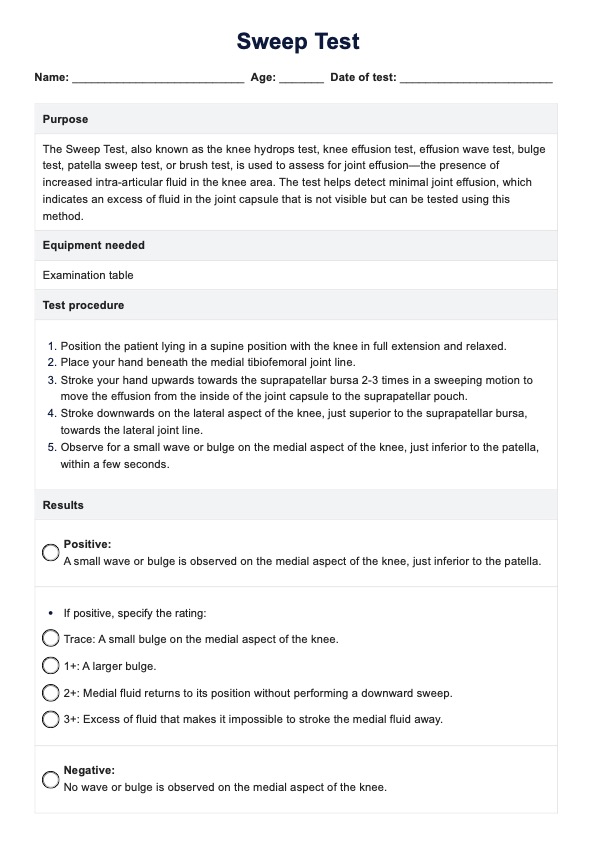Knee joint effusion is the accumulation of excess fluid in or around the knee joint. This condition can cause swelling, pain, and limited movement in the knee.

Sweep Test
Learn about knee joint effusion and the Sweep Test. Discover template benefits and why Carepatron is ideal for accurate assessments in orthopedic care.
Use Template
Sweep Test Template
Commonly asked questions
The Sweep Test is performed with the patient lying in a supine position. The examiner uses a sweeping motion to move fluid within the knee joint and observes for a wave or bulge indicating joint effusion.
A positive Sweep Test indicates the presence of joint effusion, which suggests an excess of fluid in the knee joint. This can be due to various conditions, including injury, arthritis, or infection.
EHR and practice management software
Get started for free
*No credit card required
Free
$0/usd
Unlimited clients
Telehealth
1GB of storage
Client portal text
Automated billing and online payments











